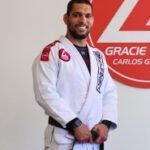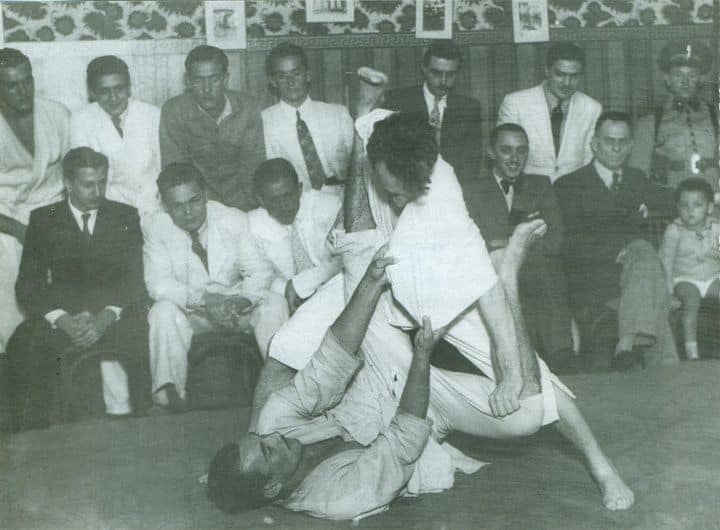Hello, my name is Professor Seidler Rodrigo Ziser, Head Professor at Gracie Barra Riverton. Over the years, I’ve trained students who came to me after trying other martial arts, as well as complete beginners searching for the right place to start.
If you’re looking for martial arts classes, you’ve probably asked yourself: Which martial art is best for me? With so many options, Jiu-Jitsu, Judo, Taekwondo, Muay Thai, Boxing, and MMA, the choice can feel overwhelming.
The truth is, each discipline has unique benefits. But not every martial art fits every lifestyle or goal. In this article, I’ll walk you through a friendly comparison, highlighting the strengths of each while showing why Brazilian Jiu-Jitsu is such a powerful choice for adults who want fitness, self-defense, and personal growth.
Why Comparing Martial Arts Classes Matters
When deciding which martial art to pursue, it’s important to consider more than just fighting styles. You should think about:
- Safety and longevity – Will you be able to train consistently without frequent injuries?
- Practical self-defense – Does the art prepare you for real-life situations?
- Accessibility – Can beginners of all ages and fitness levels participate?
- Community and support – Will you find an environment that motivates and inspires you?
Now, let’s break down how Jiu-Jitsu compares to other popular martial arts.
Jiu-Jitsu vs Judo
Both Jiu-Jitsu and Judo share the same roots, but they evolved with different focuses.
- Judo emphasizes throws and takedowns, making it excellent for balance, explosiveness, and stand-up grappling.
- Brazilian Jiu-Jitsu (BJJ) focuses on ground fighting, submissions, and control, allowing smaller practitioners to defend themselves against larger opponents.
Why adults often prefer Jiu-Jitsu over Judo:
- Safer for long-term practice because it minimizes impact-heavy throws.
- Provides a more complete self-defense system by teaching what happens after the fight goes to the ground.
- Accessible for people of all sizes, ages, and fitness levels.
Judo is dynamic and explosive, but Jiu-Jitsu offers a gentler learning curve for adults who want effective techniques without constant high-impact falls.
Jiu-Jitsu vs Taekwondo
Taekwondo is one of the most widely practiced martial arts, known for its impressive kicks and Olympic sport status.
- Taekwondo focuses on speed, agility, and striking with legs. It builds flexibility, coordination, and discipline.
- Brazilian Jiu-Jitsu focuses on leverage, positioning, and submissions, using grappling rather than strikes.
Why many adults choose Jiu-Jitsu over Taekwondo:
- Striking requires quick reflexes and youthful agility, while Jiu-Jitsu allows adults of all ages to succeed through technique and timing.
- BJJ provides direct self-defense applications against someone who grabs, pushes, or takes you to the ground.
- Lower risk of concussions or head trauma compared to striking arts.
Taekwondo builds athleticism and speed, but Jiu-Jitsu is often more practical for adults looking for lifelong training and self-defense.
Jiu-Jitsu vs Muay Thai
Muay Thai, the art of eight limbs, is a striking-based martial art from Thailand.
- Muay Thai develops devastating strikes using fists, elbows, knees, and shins. It’s known for conditioning, toughness, and stand-up fighting dominance.
- Brazilian Jiu-Jitsu neutralizes opponents by taking the fight to the ground, using technique rather than raw power.
Why adults appreciate Jiu-Jitsu over Muay Thai:
- BJJ is lower impact, has no shin clashes, fewer bruises, and less wear and tear on the body.
- Jiu-Jitsu allows you to control and submit an opponent without causing them significant harm.
- Safer for professionals who can’t risk facial injuries from strikes.
Muay Thai is incredible for fitness and striking, but Jiu-Jitsu offers a “gentle art” approach that still empowers you in self-defense without relying on striking.
Jiu-Jitsu vs Boxing
Boxing is one of the oldest and most respected martial arts, with incredible fitness benefits and a strong culture of discipline.
- Boxing teaches footwork, timing, and powerful punches. It’s fantastic for conditioning and striking skills.
- Brazilian Jiu-Jitsu prepares you for close-contact self-defense scenarios, teaching you to control, neutralize, and submit an opponent.
Why Jiu-Jitsu stands out for many adults in comparison to boxing:
- Boxing is high-impact and can lead to chronic injuries, particularly to the head and hands.
- Jiu-Jitsu provides a safer training path for long-term practice.
- In real-life self-defense, most altercations end up in clinches or on the ground, where Jiu-Jitsu excels.
Boxing builds grit and cardiovascular endurance, but Jiu-Jitsu offers a complete system for controlling confrontations without relying on striking.
Jiu-Jitsu vs MMA
MMA (Mixed Martial Arts) combines striking and grappling, drawing from Boxing, Muay Thai, Wrestling, Judo, and Jiu-Jitsu.
- MMA is exciting and comprehensive, but physically demanding and better suited for younger athletes looking to compete.
- Brazilian Jiu-Jitsu is a core element of MMA, but on its own, it allows students to train in a structured, safe environment without the extreme physical toll.
Why do many people choose BJJ over MMA?
- MMA training often involves intense sparring with higher injury risks.
- BJJ allows for controlled sparring (“rolling”) that can be practiced daily without damaging the body.
- Jiu-Jitsu keeps the community atmosphere while still preparing you with essential skills for self-defense.
If you admire MMA fighters, you’ll be interested to know that nearly all of them have a strong Jiu-Jitsu foundation. It’s the one art that consistently proves itself at the highest level of combat sports.
Why Brazilian Jiu-Jitsu Stands Out
After comparing Jiu-Jitsu to other martial arts, here’s why BJJ often becomes the art of choice for adults searching for martial arts classes:
- Safe, long-term training – You can start at any age and continue for decades.
- Practical self-defense – Focuses on realistic situations where leverage beats strength.
- Inclusive community – Everyone is welcome, regardless of experience or athletic background.
- Personal growth – Builds confidence, resilience, and problem-solving skills.
Other martial arts offer amazing benefits, but Jiu-Jitsu is unique because it balances effectiveness, accessibility, and longevity like no other discipline.
Come Try a Free Class at Gracie Barra Riverton
If you’re considering martial arts classes and wondering which path to choose, I invite you to experience Brazilian Jiu-Jitsu for yourself. Whether you’re looking for fitness, self-defense, or a new community, Jiu-Jitsu has the power to transform your life.
At Gracie Barra Riverton, we make that first step easy. You don’t need experience, special fitness, or prior martial arts knowledge, just curiosity and the courage to try something new.
Come join us for a FREE trial class at Gracie Barra Riverton. No pressure, no ego, just real training, amazing people, and the chance to discover why Jiu-Jitsu might be the best martial art for you.
We’ll see you on the mats.

